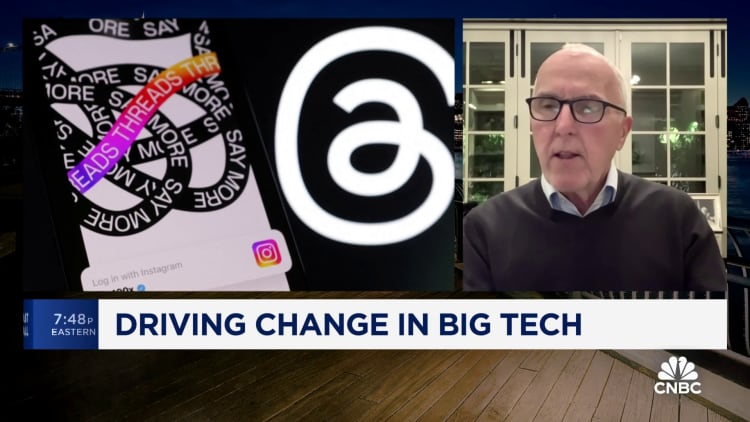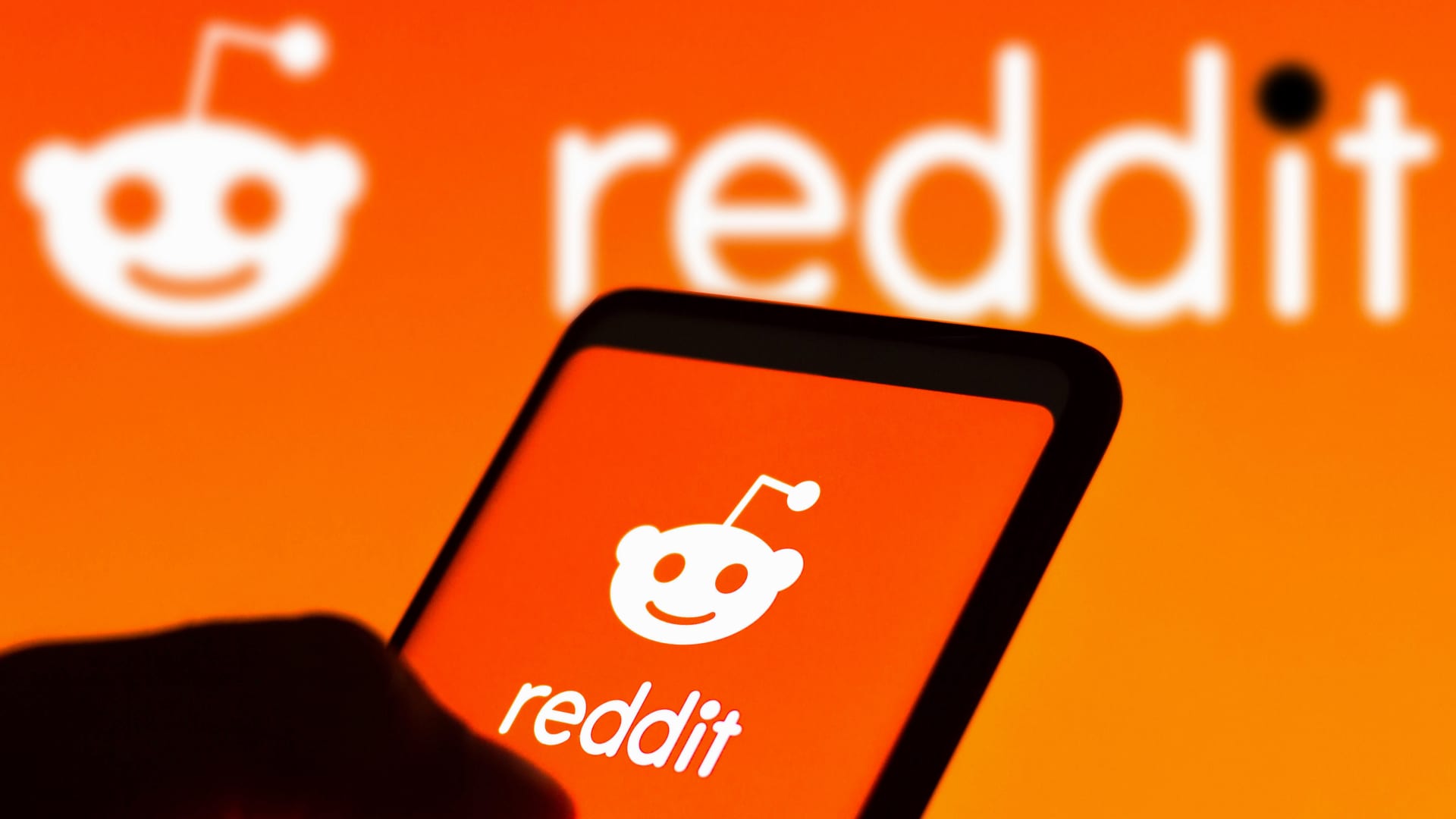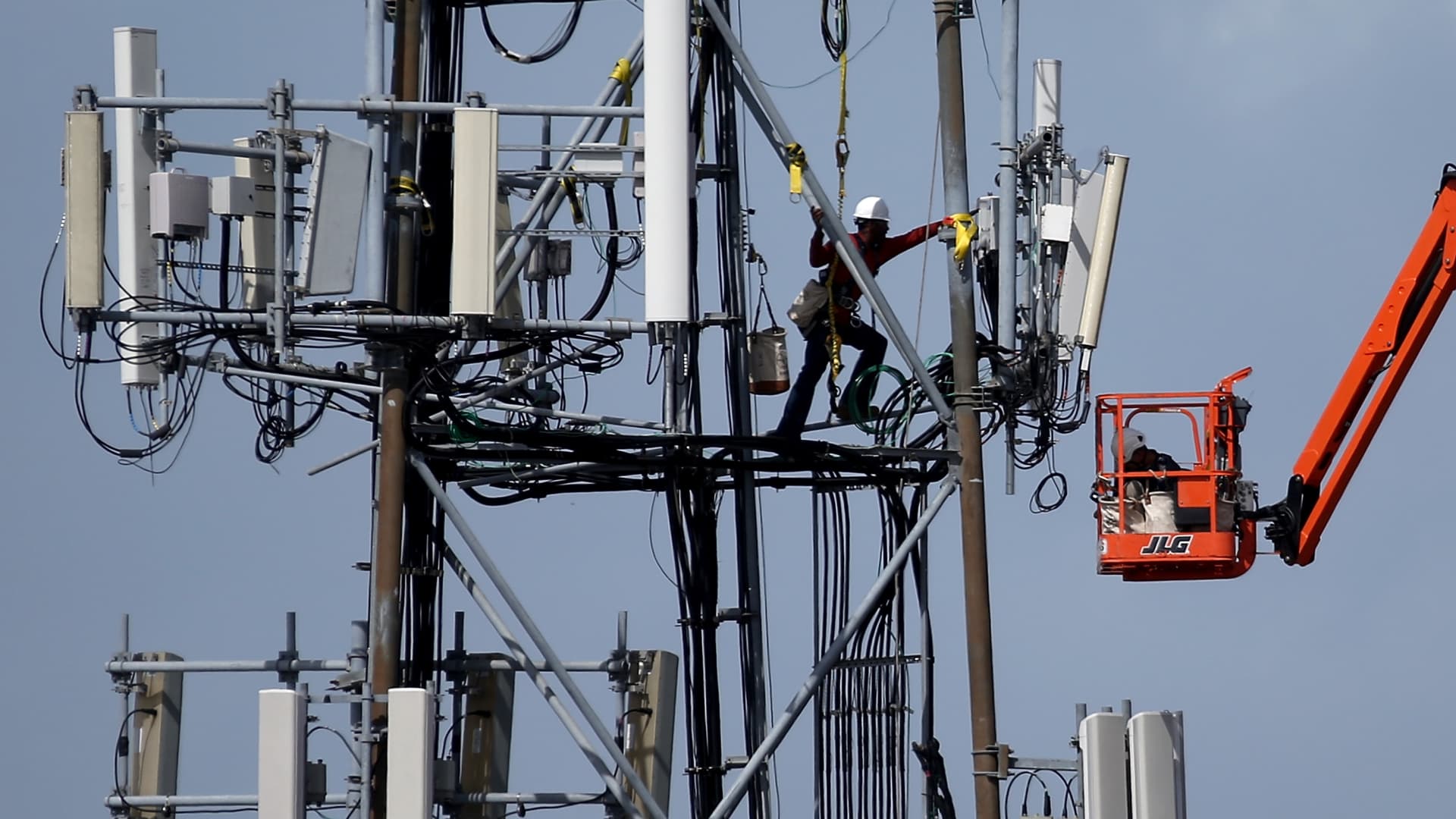
Snap Inc. co-founder and CEO Evan Spiegel speaks during the Viva Technology conference dedicated to innovation and startups, at the Porte de Versailles exhibition center in Paris, June 17, 2022.
Benoit Tessier | Reuters
Snap reported revenue that trailed analysts’ estimates on Tuesday and issued a forecast that came in a bit below Wall Street expectations. The stock plunged 30% in extended trading.
Here’s how the company did:
- Earnings per share: 8 cents, adjusted, vs. 6 cents expected by analysts, according to LSEG, formerly known as Refinitiv.
- Revenue: $1.36 billion vs. $1.38 billion expected, according to LSEG.
- Global Daily Active Users: 414 million vs. 412 million expected, according to StreetAccount.
- Average revenue per user: $3.29 vs. $3.33 expected, according to StreetAccount.
Snap has struggled to rebound from the downturn in the digital ad market, and has now reported six straight quarters of single-digit growth or sales declines. For the fourth quarter, revenue rose about 5% year-over-year to $1.36 billion from $1.3 billion a year earlier.
The company attributed some of the weakness to the war in the Middle East, which erupted in October, beginning with Hamas’s attack on Israel.
“While we are encouraged by the progress we are making with our ad platform and the improved results we are delivering for many of our advertising partners, we estimate that the onset of the conflict in the Middle East was a headwind to year-over-year growth of approximately 2 percentage points in Q4,” Snap said in a letter to investors.
Growth is expected to accelerate in the first quarter, but not quite as fast as analysts were expecting. Snap forecast sales for the quarter of $1.095 billion to $1.135 billion, representing about 11% growth at the midpoint of the range, which was $1.115 billion. Analysts were looking for revenue of $1.117 billion.
Daily active users for the first quarter will be 420 million, Snap said, slightly topping analyst estimates of 419.3 million.
Snap shares sank below $12 after Tuesday’s report. They closed at $17.45 and were up 3% for the year prior to the earnings announcement after soaring 89% in 2023.
Earlier this week, Snap said it would cut 10% of its global workforce, which equates to about 500 employees. A company spokesperson told CNBC in a statement that the cuts were intended to reorganize staff and “reduce hierarchy and promote in-person collaboration.” In mid-2022, Snap eliminated about 1,000 employees, or 20% of its fulltime workforce.
Snap’s net loss for the quarter narrowed to $248.2 million, or 15 cents a share, which represents a 14% year-over-year decrease from $288.5 million, or 18 cents a share.
Snap said it expects an adjusted EBITDA loss between $55 million to $95 million in the first quarter, higher than analyst projections of $21.9 million. Last quarter, Snap issued an “internal forecast” for the fourth quarter instead of providing official guidance because of “the unpredictable nature of war,” referring to the Israel-Hamas war.
Snap on Tuesday disclosed sales its its Snapchat+ subscription service for the first time and said it had an annualized revenue run rate of $249 million in 2023. The service now has 7 million subscribers, up from five million in the previous quarter. Snap introduced the product in 2022, pitching it as a way for users to access early features. It came debuted that summer for $3.99 a month.
Snap’s growth in the fourth quarter lagged larger digital ad rivals like Meta, Amazon and Alphabet, which all reported double-digit expansion in their advertising units.
Snap and Pinterest are “much smaller companies that have struggled to build substantial ad businesses, Debra Aho Williamson, an industry analyst, told CNBC. “In this environment, the big are getting bigger,”
Last week, Snap CEO Evan Spiegel attended a Senate Judiciary Committee hearing on child safety and technology alongside Meta CEO Mark Zuckerberg, X CEO Linda Yaccarino, TikTok CEO Shou Zi Chew and Discord CEO Jason Citron. Lawmakers grilled the executives, accusing them of failing to properly safeguard their respective platforms from child predators, among other concerns.
WATCH: Social media apps like Facebook “are doing great harm.”








